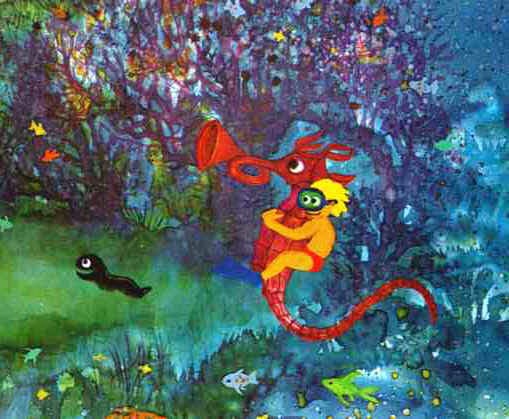 |
| Sensationalist, oblong poster for W. Lee Wilder's The Snow Creature |
The Snow Creature is a low-budget-horror flick about a botanical expedition to the Himalayas that gets derailed by a snow creature's abduction of the wife of one of the Sherpas. The mission of the group alters, and they succeed in capturing the Yeti and bring it back to Los Angeles, where, of course, it breaks loose.
Crudely modeled over Merian C. Cooper and Ernest B. Schoedsack's classic King Kong (1933), - pretty obvious for instance on the poster above, in which the creature resembles Kong, (and is far larger than in the film, where it is merely a tall man in a furry costume), - Snow Creature is said to be the first film about a Yeti.
This is, however, not enough to lift it out of its secure position as a cinema turkey. None of the characters are established well, and the story is handled without much ability or importance. Instead, Creature features vast amounts of boring, long shots of people simply walking in the mountains. The creature is hidden from view for as long as possible, but when we do get glimpses of it, it is also a dud: The costume is very poorly accomplished and won't scare most audiences.
The film isn't terrible in its acting, merely boring. It features Paul Langton (The Incredible Shrinking Man (1957)) as the botanist leader Frank Parrish. As the creature breaks out in the big city, it descends to the sewer system, shot in the LA drain system, and this proves an atmospheric, scary location. The scenes down there are the best thing about Snow Creature.
Its script is by Myles Wilder (The Dukes of Hazzard (1979-85)), the son of the director, and it poses - together with the poor monster - the biggest obstacle for the film: The Western leads are pretty unsympathetic: In the field, they ridicule the locale's belief in the Yeti, until enough evidence shows them that they are wrong, whereby they refuse the man of the abducted woman to shoot the monster. Instead they capture it and bring it back to civilization, where it breaks loose and kills more people, whereupon they finally SPOILER kill it themselves.
The last scene is pretty weird, and awful: The male leads talk in a car after the monster kill, about naming one of their kids after each other. The end. Awful film, really.
The details:
The film is directed by W. Lee Wilder (The Man Without a Body (1957)) from Austria-Hungary (now Poland), whose younger brother was the famous, great American director Billy Wilder (Sunset Boulevard (1950)). The two were estranged for many years, and Billy Wilder once described his older brother as "a dull son of a bitch."
Without obviously knowing any of them personally, but only judging by their films, Billy Wilder may have been correct. Certainly The Snow Creature is not a match for even the poorest of W. Lee's brother Billy Wilder's movies.
Budget: Unknown
Box office: Unknown
= Unknown
What do you think of W. Lee Wilder's pictures, (if you have seen any)?
Do you know anything of the enmity between the film-making Wilder brothers?


















